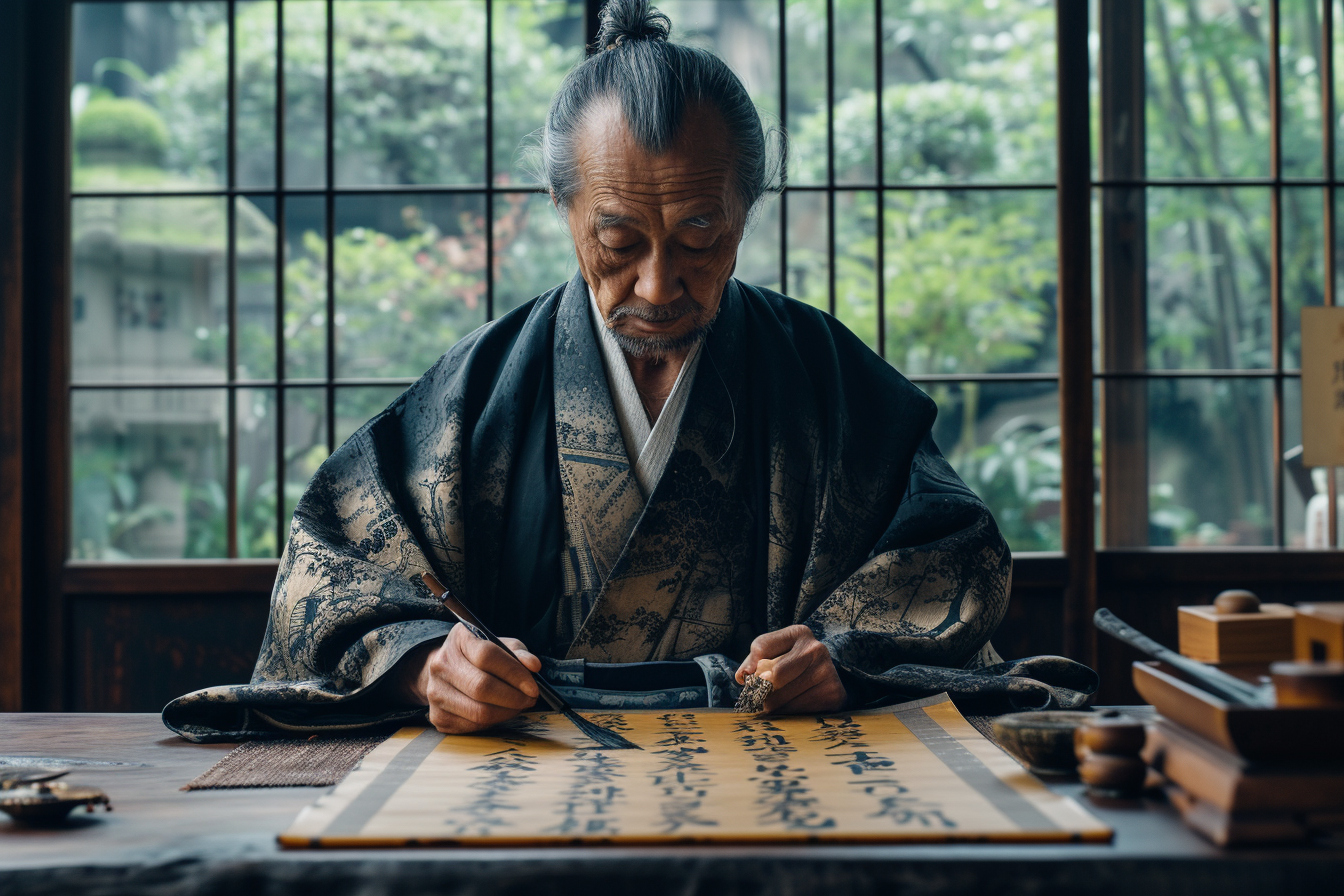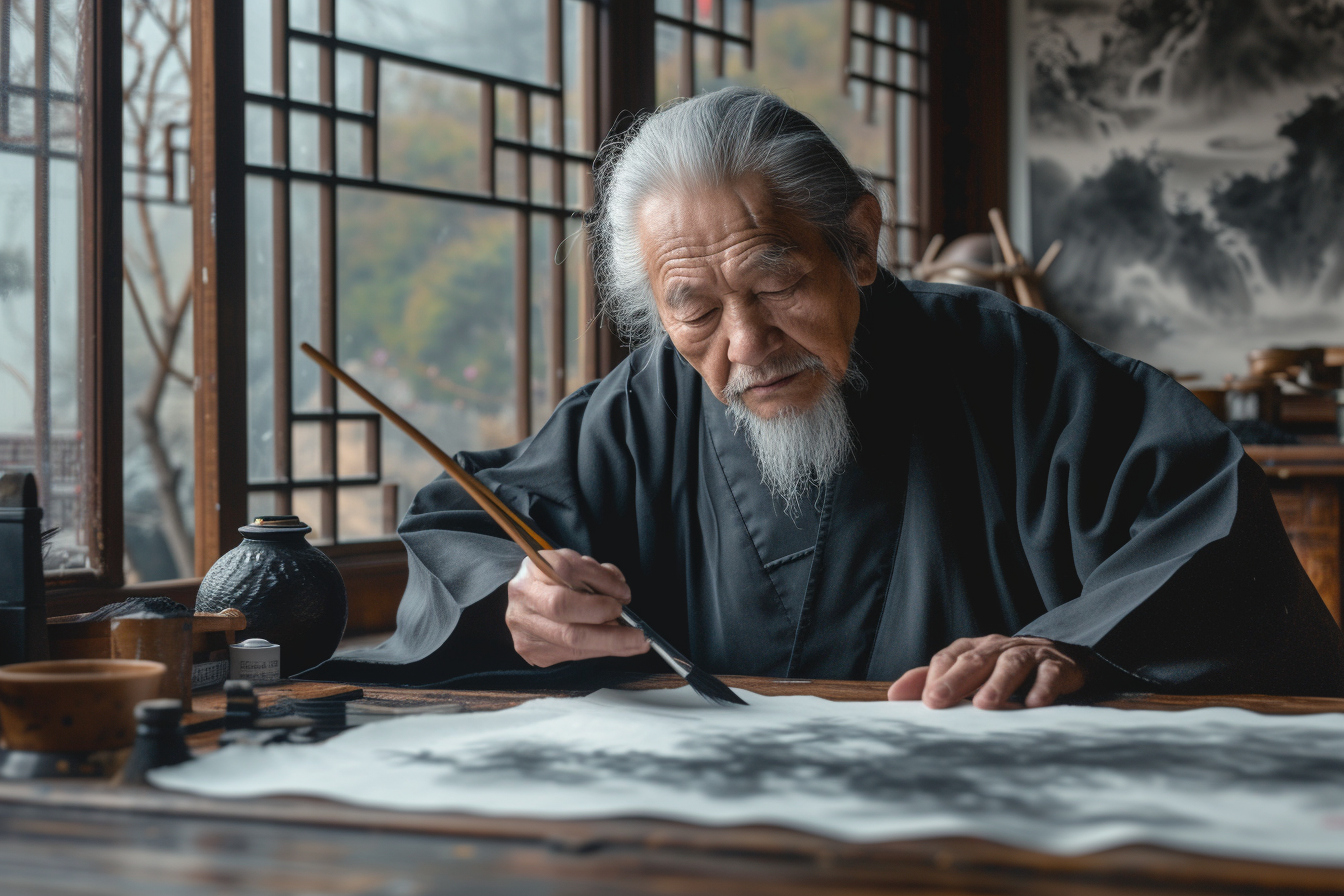Ink painting, a prominent form of artistry especially in East Asian cultures, stands as a testament to the beauty that can emerge from the harmonious interplay of simplicity and depth. With its origins deeply rooted in calligraphy, this art form leverages the interplay of ink, water, and paper to create images that transcend visual aesthetics, embodying philosophical ideas and capturing the very essence of subjects with minimalistic elegance.
The fundamental tools of ink painting
Before delving into the techniques, understanding the traditional tools used in ink painting is essential. The bristle-tipped brush, the steadfast ink stick ground against the stone with water to release its pigment, and the receptive rice paper form the trilogy that has painted history for centuries. Modern practitioners may choose to experiment with contemporary materials, but the essence of ink painting remains constant.
Brushes: your wand of creation
Choosing the right brush is critical. A variety of brushes, each with different sizes, shapes, and bristle types, offers distinct strokes and textures. Larger brushes cover wide areas, laying down broad, gestural strokes, while smaller, finer brushes are perfect for delicate details and precision.
Ink: the essence of monochrome
The density and grinding of the ink stick can vary the shade from the deepest blacks to shades of gray, offering an entire spectrum within one color. Liquid ink bottles, although convenient, may lack the nuanced control provided by traditional ink grinding.
Paper: a canvas of absorbance
The choice of paper can greatly affect the outcome of an ink painting. Typical rice paper (typically called xuan paper) absorbs ink rapidly, allowing for beautiful, spontaneous effects. However, alternative papers with different levels of absorbency are available for artists seeking a diverse range of textures and effects.
Techniques to enhance your ink painting practice
Embracing the ink’s fluidity
Spontaneity and control define the soul of ink painting. The fluidity of ink is a characteristic that requires not just practice but also mindfulness to master. Artists must learn to guide the ink where they want, while also allowing it to find its own path, creating natural forms and expressions.
Pressure sensitivity: the stroke’s character
Varying the pressure on the brush can yield a compelling range of thickness within a single stroke. Lighter pressure produces finer lines, while heavier application releases bold, dramatic strokes. Control over pressure sensitivity can bring a dynamic energy to depictions.
Graded washing: mastering value
Graded washes are fundamental for creating depth and dimension. With a careful blend of water and ink, artists can transition smoothly from light to dark, building layers to add volume and complexity. The wash technique also serves well for background elements, setting a mood or atmosphere within a painting.
Dry brush technique: textural diversity
Strong textural effects can be achieved with a relatively dry brush carrying minimal ink. This technique, known for its scratchy, vibrant lines, can simulate textures such as tree bark, rock surfaces, or hair. Experimentation with brush dryness can yield a spectrum of textural possibilities.
Detailing: the art of precision
Deep focus on detailing can bring a painting to life. Using a fine brush, an artist can carefully define the eyes of a portrait, the veins of a leaf, or the tiles of a distant roof. This meticulous work contrasts with broader washes, inviting the viewer into an intimate relationship with the forms on the paper.
Negative space: the power of the unpainted
Not painting an area can be as powerful as the stroke of a brush. Negative space in ink painting breathes life into the subject, setting it in its environment, and providing a visual rest for the viewer. Skillful use of negative space can balance a composition and emphasize the subject without crowding the canvas.
Advanced techniques for experienced artists
Multiple load brush technique
For artists seeking to present a complex interplay of colors and values in a single stroke, the multiple load brush technique presents a thrilling challenge. By loading a brush with varying shades of ink or colors, one can achieve gradient effects and a fusion of hues that provide a captivating vibrancy to the painting.
Splashing and sprinkling for effect
Splashing ink onto paper creates dramatic and unpredictable patterns, often used to represent natural phenomena such as rain, mist, or abstract textures. This requires a mixture of premeditation and a willingness to embrace the unexpected results that the ink may offer.
Ink bleeding for soft transitions
The bleeding of ink, when water is added to it on the paper, results in soft, dreamy transitions, perfect for capturing moods or creating ethereal backdrops. The artistry lies in controlling the water to ensure the ink bleeds in an aesthetically pleasing manner.
The philosophy behind the brush

Ink painting is more than a mere application of techniques. It is an expression of the artist’s inner world, an exercise in discipline, and a journey towards simplicity and essence. Its beauty emerges not just from mastery of the brush, but also from the thoughtful intention behind each stroke.
Developing an artful approach to ink painting means embracing myriad contrasts: the balance between intent and accident, the interplay between void and substance, and the harmony of simple lines creating complex beauty. With each dip of the brush in ink, and with each touch to paper, the artist embarks on a personal quest to capture not just images, but moments of fleeting, unspoken elegance.
For those aspiring to master the art of ink painting, a dedicated practice, an attentive mind, and a spirit open to the painting’s own narrative are invaluable allies. Every creation is a learning experience, and every piece holds the potential for both revelation and revolution in technique.
By immersing oneself in the history, philosophy, and physical execution of ink painting, an artist can channel their vision into stunning visual creations that resonate with viewers across cultures and ages. Mastery in ink painting is a continuous journey that binds the hand, the heart, and the history of this sublime art form.

Leave a Reply